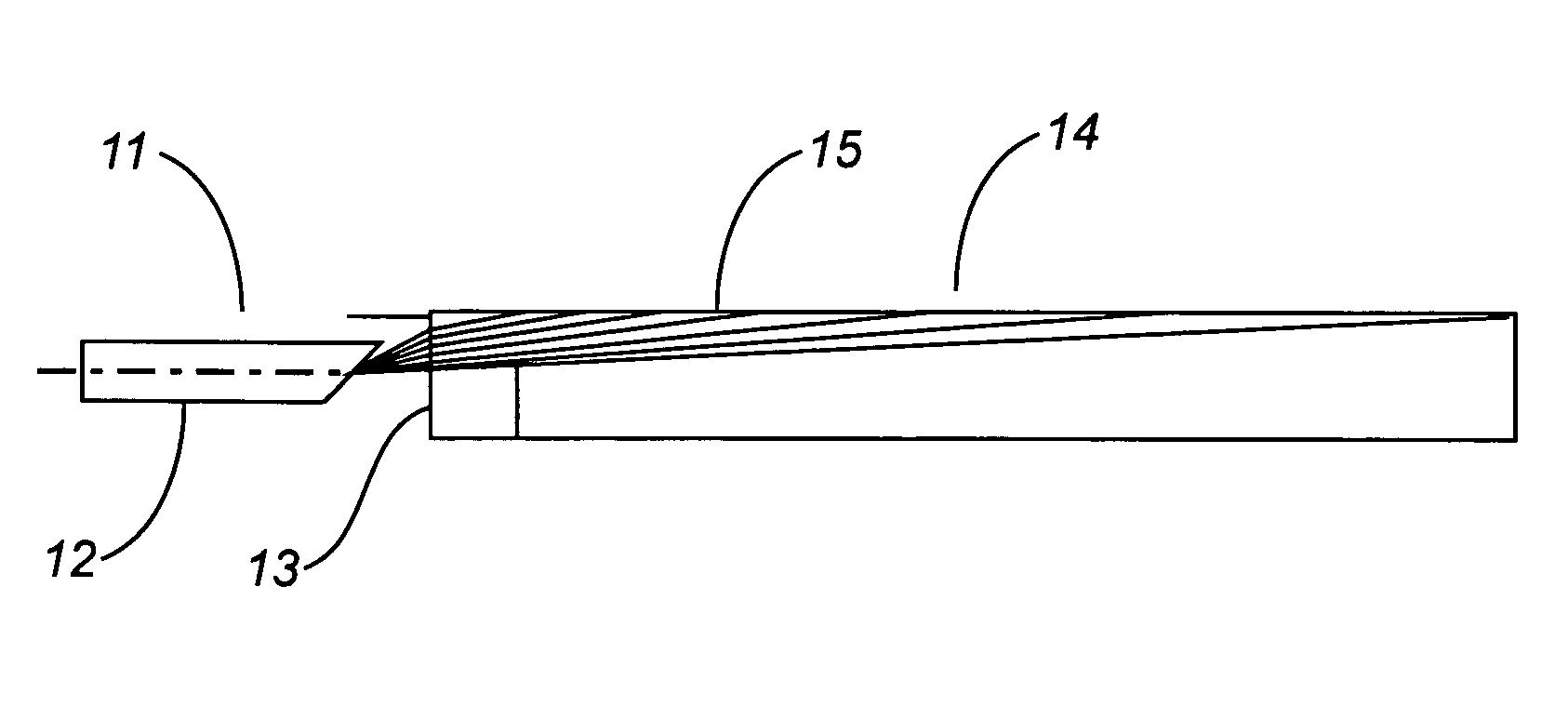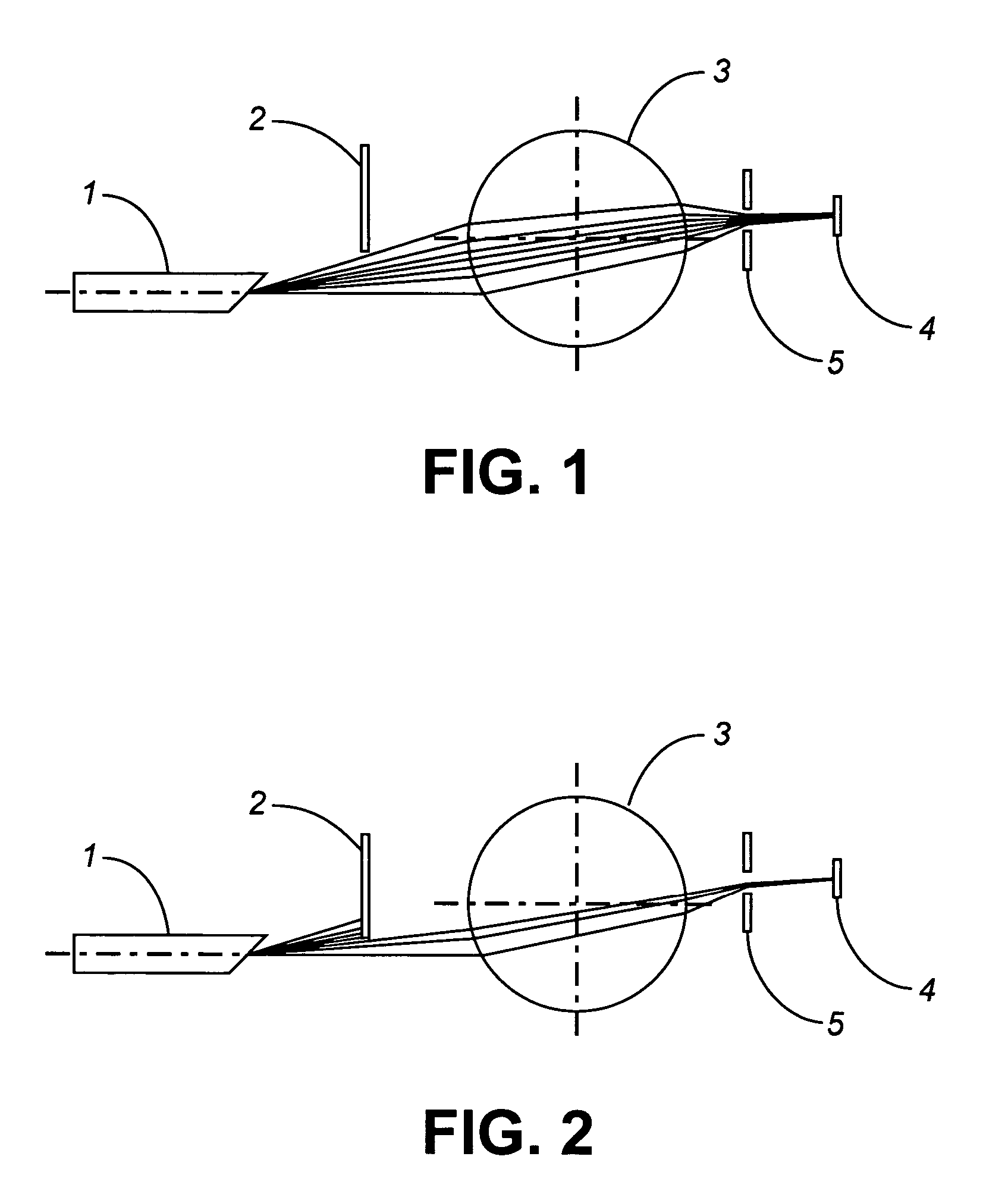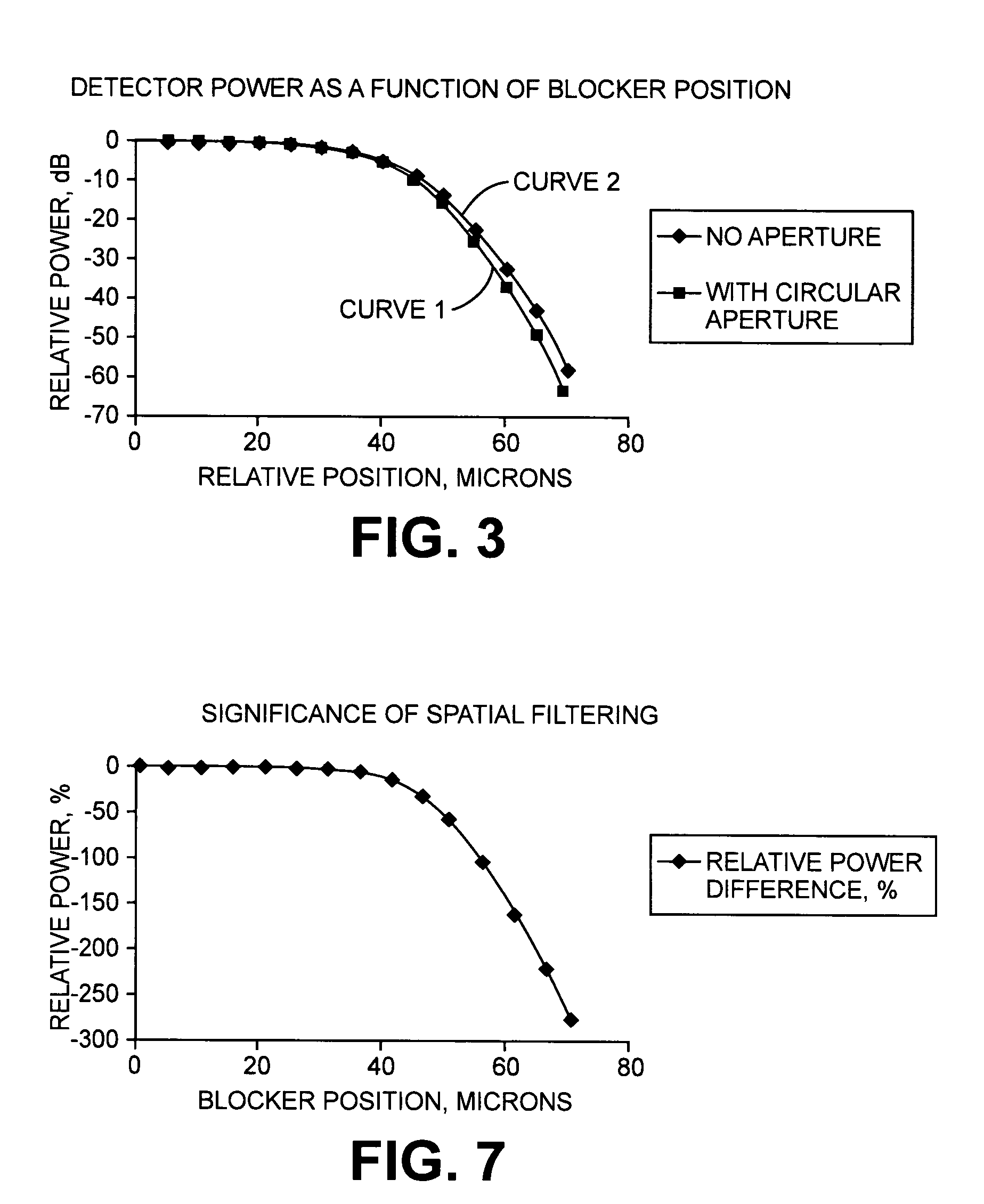Optical receiver with high dynamic range
a receiver and high-distribution technology, applied in the field of optical receivers, can solve the problems of attenuation of signals, power level variations, power levels that may also vary, etc., and achieve the effect of increasing the responsivity of the photo-detector and increasing the effective thickness of the absorption layer
- Summary
- Abstract
- Description
- Claims
- Application Information
AI Technical Summary
Benefits of technology
Problems solved by technology
Method used
Image
Examples
Embodiment Construction
[0045]As illustrated in FIG. 1, the optical assembly according to the subject invention generally includes an optical subassembly with a single lens for coupling light transmitted from an input fiber to photosensitive area 4 of a photodetector (PD) and an integral optical blocker 2 for selectively attenuating the light (i.e. signal) when desired. In a particularly advantageous embodiment, the optical subassembly also, optionally, includes an aperture 5 located between lens 3 and photosensitive area 4 of the PD.
[0046]FIG. 1 illustrates a High Dynamic Range Receiver (HDRR), according to the subject invention, when blocking mechanism (optical attenuator) 2 is not activated and the receiver has maximum sensitivity. FIG. 2 illustrates the same embodiment as FIG. 1 but shows blocking mechanism 2 inserted into the input beam and thus attenuation of the input signal. In this embodiment, in order to reduce the amount of light reflected back from the fiber edge, the fiber edge is machined at ...
PUM
 Login to View More
Login to View More Abstract
Description
Claims
Application Information
 Login to View More
Login to View More - R&D
- Intellectual Property
- Life Sciences
- Materials
- Tech Scout
- Unparalleled Data Quality
- Higher Quality Content
- 60% Fewer Hallucinations
Browse by: Latest US Patents, China's latest patents, Technical Efficacy Thesaurus, Application Domain, Technology Topic, Popular Technical Reports.
© 2025 PatSnap. All rights reserved.Legal|Privacy policy|Modern Slavery Act Transparency Statement|Sitemap|About US| Contact US: help@patsnap.com



